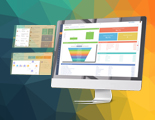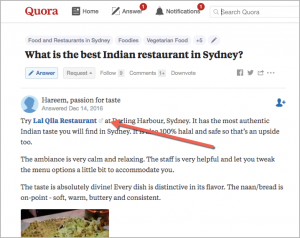Learn how to leverage GA4’s predictive metrics to forecast customer behavior and inform your marketing campaigns.
Data has become the lifeblood of businesses in today’s digital age. Traditionally, analyzing data meant looking back at historical trends to inform future decisions. However, marketing analytics has evolved. Now, businesses aim to predict future trends and opportunities rather than just looking at the past.
This article tackles the growing power of predictive analytics, especially in the context of Google Analytics 4 (GA4). We’ll explore how GA4 is changing the game — offering insights beyond historical data and giving businesses a competitive edge with predictive metrics.
Redefining digital analytics: Moving beyond the ‘historical reporter’ role
Are digital analytics experts like fortune tellers or historians? And what about those who use analytics tools? In contrast to common belief, the reality is that standard digital analytics tools, such as GA4 or Adobe out of the box, don’t even serve as historical references.
Most present-day analytics users operate as “reporters,” focusing on metrics like the number of visitors or sessions from a specific channel over a recent time period ((October 27, 2023), last month, this year, etc.). They may occasionally add details like ad performance. However, their reports rarely delve into the crucial “why” behind the data.
Leveraging historical analytics data for future efforts can be valuable, but the data can be almost worthless without understanding the true causality.
Can you use data from 2020 and 2021 or even 2022, which shows a massive click-through rate on specific ads with a high conversion rate to your online store, as a predictor for which online campaigns will drive sales in 2024 and 2025 to forecast online sales? What about the most recent 2023 data?
The simple answer is “no.” It’s crucial to consider the historical impact of pandemic-related shutdowns. Perhaps you know enough to discount that data and choose data before 2020 (the pre-COVID-19 world). You shouldn’t rely on this data either because so much has changed, making the data virtually worthless.
So, what are the current benefits of a digital analytics solution beyond measuring the short-term results of various marketing efforts? To answer this, we need to reflect on the early days of digital analytics.
The digital analytics landscape was historically dominated by simple metrics — visits, page views and, if we were feeling adventurous, bounce rate. The evolution of analytics has transformed how we understand and predict user behavior.
Unitizing the most common analytics tool, Google Analytics 4, we’ll explore how this is now possible to some degree. Let me preface this by saying if you’re expecting a guide with a detailed step-by-step approach or a tiresome list of GA4’s features, think again. Instead, let’s take this journey together and learn how to leverage predictive analytics capabilities for businesses, analysts and marketers alike.
A review of predictive analytics
Predictive analytics means using existing data to predict the future. From a marketing perspective, it might be used to forecast who is likely to make a purchase, subscription churn or who will become a high-value customer.
When did you last think, “If only I could predict the future…”? Predictive analytics (for now) is as close as you can get. Using your analytics data with your “somewhat foggy” crystal ball will be far more accurate than polling/surveying your customers.
GA4 as a crystal ball: What it can predict — and why it matters
When configured correctly, GA4, as of Aug. 17, 2023, can employ machine learning models to trawl through your data, seeking patterns that might otherwise go unnoticed. These patterns help fill in missing data from users who opted out of tracking by an analytics cookie or a login ID. By filling in the missing data (with a calculated measure), your data is far more complete and can be used for predicting future user actions.
Google Analytics 4 “automatically enriches your data by bringing Google machine-learning expertise to bear on your dataset to predict the future behavior of your users,” according to Google. “With predictive metrics, you learn more about your customers just by collecting structured event data.”
Currently, there are three predictive metrics, namely:
- Purchase probability. The probability that a user who was active in the last 28 days will log a specific conversion event within the next seven days.
- Churn probability. The probability that a user who was active on your app or site within the last 7 days will not be active within the next seven days.
- Predicted revenue. The revenue expected from all purchase conversions within the next 28 days from a user who was active in the last 28 days.
While not a full-fledged magical crystal ball for predicting next year’s — or the next few years’ — results, it provides some insights into what to expect in the short term. Once you start to use your analytics data to see which users have a higher purchase probability or a lower churn probability, you can adjust your campaigns.
Even with only a window into the next seven days (or, in the case of revenue forecast, 28 days) from your analytics crystal ball, it can be operationalized into daily marketing efforts. Start thinking of tailoring campaigns and how a user’s experience can be personalized to increase conversions. All of these can be applied to help optimize your marketing budget.
Is the road ahead perfect?
Let’s not be naïve: No tool can predict the future completely. The analytics landscape is continuously evolving. Many analytics professionals hope that predictive abilities combined with AI will continue to improve accuracy and how far into the future these predictions will be made. Never forget that user behavior can be influenced by countless external factors (remember COVID).
Marrying predictive analytics with a profound understanding of your audience and current (and short-term) market trends is what we need to implement. It is the predictive analytics capabilities that can offer invaluable foresight.
As with any machine learning tool, GA4’s and other analytics tools’ accuracy improves with more data. The more data points it has to work with, the more accurate its predictions become. If you’re just beginning with GA4 (or any other tool), have patience. Make sure it is configured 100% correctly and start collecting data. Let it learn, adapt and grow.
Your next move
The era of waiting for monthly reports to guide your next move is over. Proactive, data-driven decision-making is upon us. Modern decision-makers want weekly, if not daily, reports — or why not real-time data? They no longer want to wait for the analytics/marketing team to digest, regurgitate and spit out last month’s results by the 15th of the month or, if lucky, by the end of the first week.
With GA4 and data visualization and warehousing tools, futuristic prediction and reporting are today’s reality. To harness predictive analytics, blend scientific rigor with creative thinking. Embrace the numbers, recognizing the human stories they represent.
Transform data into compelling narratives, understanding that behind each data point lies a person with motivations, desires, and emotions. Doing so gives you insight into the future and the potential to influence it.
The post The power of predictive analytics: Is the future now? appeared first on MarTech.
MarTech(5)









